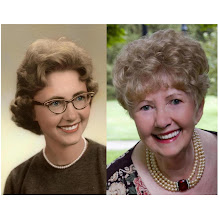Images by Barbara Ann
Friday, March 31, 2006
Schloss Benrath Main Building

 Benrath Palace, built in 1755, is unique of its time in Europe and is indeed an exceptional work of art. It was built at the end of the Baroque period during the transition to Classicism, is a successful example of the realization of the ideal so strived for, it is a complete work of art, in which architecture, landscape gardening, sculpture, painting and decorative arts are all combined.
Benrath Palace, built in 1755, is unique of its time in Europe and is indeed an exceptional work of art. It was built at the end of the Baroque period during the transition to Classicism, is a successful example of the realization of the ideal so strived for, it is a complete work of art, in which architecture, landscape gardening, sculpture, painting and decorative arts are all combined.
Schloss Benrath Palace

 The architect designed a group of one story buildings, divided into five sections. The light pink of the walls and the light grey of the stone which together form the facades of the building, the white of the woodwork and the blue-grey of the slate roof give the building a festive and pleasant appearance.
The architect designed a group of one story buildings, divided into five sections. The light pink of the walls and the light grey of the stone which together form the facades of the building, the white of the woodwork and the blue-grey of the slate roof give the building a festive and pleasant appearance.
Wednesday, March 08, 2006
Tuesday, March 07, 2006
The Blue and Gold Label

 The blue and gold colour
The blue and gold colourcombination that today is inextricably linked with the brand was already used by
the second generation of the Mühlens family in 1839, and the “blue-gold” label that is still in use today was first put into circulation by Ferdinand Mülhens in 1881.
The shape of the bottle makes storage and use of the contents easier and makes it possible to attach larger labels such as those still used today. The Mülhens Company adopted this invention in 1822, but added a rounded neck piece – the “crop” between the shoulder of the bottle and the opening. This allowed the product, with its high alcohol content, to expand if necessary in the event that it was accidentally placed in a warm environment. The blue and gold label encircles the bottle completely, providing protection from light as well as a large design surface.
The Main Ingredients of 4711

 Only the main ingredients of 4711 Genuine Eau de Cologne are widely known: essential oils extracted from special citrus fruits; small amounts of rosemary and lavender are also included. Dissolved in pure alcohol (85% by volume), the
Only the main ingredients of 4711 Genuine Eau de Cologne are widely known: essential oils extracted from special citrus fruits; small amounts of rosemary and lavender are also included. Dissolved in pure alcohol (85% by volume), themixture must be allowed to mature for a long period of time so that its unique effects can fully develop.
Cologne, Germany - Glockengasse 4711


On October 8, 1792 a Carthusian monk presented a young merchant Wilhelm Mülhens with a seemingly simple gift. The gift was a secret recipe for the production of an “aqua mirabilis” – or “miracle water” - later to be called Eau de Cologne.
Wilhelm Mülhens recognized the value of the recipe very quickly, and shortly thereafter, he began constructing a small factory in the Glockengasse for the manufacture of the “aqua mirabilis”.
At the time of its origin, it was frequently marketed under the name “aqua mirabilis”, due to its stimulating and refreshing effect. It was one of many very popular miracle waters that produced unique effects, and which could also be taken internally.
The brand name “4711” come into being in 1796, the French Commander in Cologne, General Daurier, ordered that all the houses in the city be serially numbered.
The building in the Glockengasse” was assigned the house number 4711. In the end, Ferdinand Mülhens used the magical power of the number to distinguish his Eau de Cologne from the others in 1875, he registered it as a Trademark.
In 1881, two generations later, his grandson, registered his firm under the name “Eau de Cologne & Perfumery Factory, Glockengasse 4711, across from the postal station of Ferdinand Mülhens”.
A closely guarded secret the exact composition and recipe for 4711 Genuine Eau de Cologne is still subject to the strictest secrecy.






















